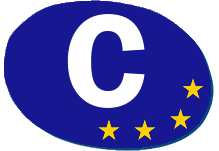The conditions for design registration are set out in the French Intellectual Property Code (IPC).
- Novelty and individual character:
Article L511-2 of the IPC provides that “only a design which is new and has its individual character may be protected. ”
The first criterion is that of novelty. It implies two considerations:
- That there are no identical designs disclosed before the filing date, i.e. a third party’s right already communicated to the public or filed (Article L511-3 of the French IPC). This condition makes it possible to exclude copies of pre-existing forms.
- That the designer has not already disclosed his or her creation by exhibiting, using or marketing it before the filing. However, there are two exceptions for creators: if the disclosure is made by their actions or via abusive behaviour by third parties against them within the 12 months before filing, the novelty criterion is still met (Article L511-6 of the IPC).
Secondly, the second criterion requires that the design has an individual character, i.e. its characteristics must differ from other designs. It must not give an impression of déjà vu: the overall visual impression must be different from other existing designs (Article L511-4 of the IPC). This condition makes it possible to rule out imitations by similar forms.
This last condition, therefore, implies that the designer must have made a real effort to be different from other designs. Nevertheless, the law proposes to take into account “the freedom left to the designer to create the design”, which depends on technical and commercial constraints, when assessing this criterion (Article L511-4 of the IPC). This assessment does not require aesthetic character or originality.
It is therefore important to carry out prior art searches before filing, to see whether the design has already been registered or used by a third party or to ensure that the design contains significant differences from other existing rights. The difficulty is that there are no time or territorial limits: prior rights that may block the application can date back many years and be disclosed in any part of the world.
The French National Institute of Intellectual Property (INPI) only examines whether the design is not contrary to public policy or morality. The examination of the other conditions is left to the sovereign appreciation of judges. The INPI do not examine prior rights. However, the risk is to hold a fragile right, since any third party can request its nullity in court if it infringes their rights or simply because the design does not meet the criteria according to Article L512-4 of the IPC.
- Visibility of the creation:
A condition that follows from Article L511-5 of the IPC is that the elements that are filed must be visible since the protection is based on appearance. The elements to be protected must be apparent during the normal use of the product. For example, if a part of a complex design is only visible when the product is opened for maintenance or repair, it cannot be protected.
- Public order and morality:
Secondly, it must not infringe on public order and morality either, according to Article L511-7 of the IPC. For example, the INPI will refuse designs that are blasphemous, insulting, obscene, racist or discriminatory.
- Exclusion of forms solely imposed by the technique and interconnection elements:
Article 511-8 of the IPC provides for this exclusion.
The characteristics or form of the product must not be imposed by its technical function. The reason is that the technical function is protectable under patent law. To determine whether the shape is dictated by the technical function, judges use the criterion of the multiplicity of shapes: if several shapes were conceivable, then the appearance of the product is not imposed exclusively by the technique.
Interconnecting parts are also not protectable. These are elements which must be combined with another product so that each can fulfil its function in normal use. The purpose of this provision is to allow the interoperability of adaptable or compatible products to liberalise the market. However, the article provides an exception for modular products, such as building blocks or storage accessories, which may be protected.









